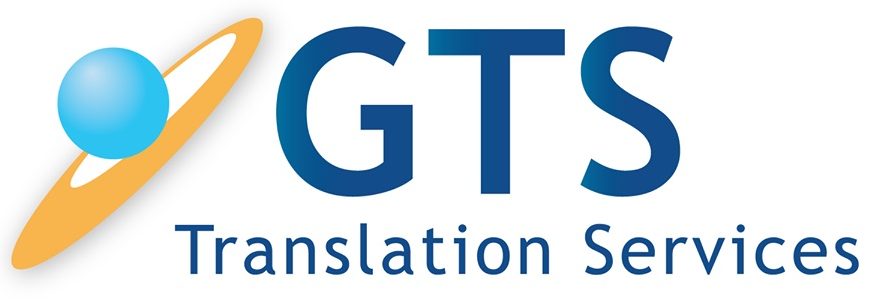By Margaret Nest
Pay-per-click (PPC) advertising, also known as paid search campaigns, can help your translation service reach foreign audiences in their native language, facilitating your business’s entry into new markets.
If you want to grow internationally and reach potential clients in foreign countries, you must include PPC in your localization strategy. As a translation provider you are aware of the power of communication, but it is another story when it comes to marketing.
We’ll provide you with advice on how to begin using PPC in this post. Continue reading to learn more!
Understanding the Target Audience
Using highly focused advertising methods in their native tongue is the most effective way to reach viewers abroad (particularly if you bid on low-competition high-intent search terms). You may reach audiences that your rivals cannot if you are prepared to put in the extra effort and use a good strategy.
To steer clear of typical errors, research each market’s cultural preferences and buying patterns. Finding similar shopping behaviors, maintaining consistency in language and content throughout your campaign, and making sure your offer is truly helpful for your target demographic are all necessary.
It could be beneficial to further segment your audience if you are currently targeting customers by country. Targeting by city or even postcode radius is an option. To increase clicks, it is useful if you wish to incorporate the local dialect in your advertisements or refer to the region by name.
This feature allows you to take advantage of “near me” searches as well. It’s worthwhile to invest some time in honing your location targeting because they typically have strong and instant purchase intent (particularly in high-value areas for your business).

Use national search engines-not only Google. There are other popular possibilities when you can get a lot of paid traffic, even though it is the most popular search engine and ad platform in English-speaking countries. To reach additional users, think about placing ads on other search engines:
Researching these platforms can help you better understand how customers search and interact with the offered advertising proposals, even if it is not feasible or cost-effective to promote them.
If you target two or more languages, you should have each one set up as a distinct campaign and ad group because Google only lets you declare your language and geographic targets at the campaign level.
You don’t have to start from scratch every time you create a campaign, though. Instead, make plans to replicate your original campaign’s framework. Don’t use the same keywords, though. Once your initial campaign has been replicated for the number of languages you intend to target, you can start adjusting the links, ad messaging, and keywords as necessary.
Keyword Research for Translation Services
Take the time to investigate each target language’s keywords. Make distinct campaigns for each target language rather than combining them all into one. It provides more control over each market’s optimization and bidding tactics.
Creating an Excel document with keywords in a chart that consumers can use to obtain information on a certain topic is the first step in a comprehensive search term investigation. This also includes obtaining important information about search volume, competition level, and bidding costs, depending on the tool being utilized.
In addition to search campaigns, keyword research can assist in expanding display and video ad audiences. By focusing on people who are either searching for particular terms or interacting with material connected to those search terms, translation companies can increase their reach across a variety of ad forms.


AI helpers can assist you in expanding on the initial seed keywords for the process. For your PPC ads, you may ask the model to focus on particular term categories or return a set quantity of keywords.
You will have a large number of local keywords after performing multilingual keyword research. So, how do you decide which to use?
Sort the keywords first, selecting those that are most pertinent to your brand and end consumers’ search intent. Next, choose the options that have the best chance of increasing conversions, such as:
- Keywords that exactly match
- Brand-specific keywords are those that contain your brand’s name
- Keywords with broad matches
- Long-tail keywords
You may also look at the search terms that your rivals use to improve your list of target keywords. After all, having a native speaker create original messaging for other languages is frequently considerably more beneficial than translating your English message or any other original message.
Every regional user searches online using a wide range of keywords and concepts. Since many of the terms have different meanings, direct translation is ineffective in this situation. When you translate literally, you end up with irrelevant target keywords, which reduces the profitability of your ads. Rather, you should use the languages you plan to advertise in to perform in-depth keyword research in each of your target markets.
Landing Page Optimization
If a fantastic advertisement leads to a landing page that is either directly translated from your English material or not translated at all, it is worth very little.
In your situation, accurate, readable, and culturally appropriate messaging is essential to the campaign’s effectiveness. This entails working hard at your landing page copy, avoiding automated translation tools, and creating a native version that will attract users. As a result, you should allocate time to replicate the layout of your original landing page before attempting to modify the messaging for every language. For each market and language you want to cover, you will need to make a different language page.
When Apple refers to these pages as multilingual, they indicate that they are made for consumers in their native language while preserving their original intent and goals.

All things considered, Novedades à la vista and Nouveautés à l’horizon have essentially the same meaning. Their spokespeople would roughly translate Novelties on the Horizon into English. However, this shift is not at all random. The word “novelties” connotes superficiality in English, which is not what Apple primarily wishes to convey.

Although Azul Alpine (Alpine Blue) and Sierra Blue are not the same thing, doesn’t the latter seem like a better match? For many Europeans, the famous Alps mountain range is near to home. It would appear that the French bleu Alpin would concur as well.
In addition, you should think about additional factors that will contribute to the cultural relevance of your landing pages. It might involve going above and above to include the appropriate layout, color schemes, and imagery that a certain demographic will find relatable.
Split testing is essential to your PPC success, just like with domestic ads. To find what works for each market, try a variety of messaging, target keywords, ad designs, and landing sites. Utilize the knowledge gained from your tests to guide any upcoming or further efforts aimed at the same demographic.
Budgeting and Bidding Strategies
When running a multilingual PPC campaign, it’s crucial to allocate budgets separately for each region and language. Each market has its own set of costs-per-click (CPCs), competition levels, and performance metrics. By segmenting your budget, you can closely monitor the performance of each campaign and ensure that funds are directed to the regions that deliver the highest ROI.
For example, more rivalry in some markets may result in higher CPCs. In these situations, it’s crucial to set aside a bigger percentage of your budget to keep your ads visible. You can use a smaller budget to acquire great visibility in less congested markets. Allocating your money flexibly enables you to react quickly to changes in the market.
You can also get more out of your ad spend by swiftly reallocating your budget to high-performing markets with the aid of geo-specific bidding. Therefore, make bid adjustment judgments based on facts. Consider shifting your budget to a country where conversion rates are very high.
Receive alerts if a campaign begins to perform poorly (for instance, if your ROAS falls below a reasonable level or the CPC above a specific threshold). Create a tracker to get informed when the exchange rate declines. This might assist you in determining the most effective advertising strategy.
Keep an eye on local news because a citywide event can draw more people, so you might want to up bids while it’s happening. Events differ from nation to nation, so take into account how these could influence choices and modify your bids.
Keep an eye on when your campaigns are performing at their best, then modify bids to allocate more funds to each campaign during those periods.
A restaurant business that has locations in both London and New York, for example, can devote all of its funds to its London location in the morning. Then, divert those funds to its New York location during the same hours.
Tracking and Analytics
Every language and geographic area that your campaigns are targeting should have conversion tracking set up. With this configuration, advertisers can track particular user actions, like filling out a form, making an online purchase, or calling a company, and precisely link them to the language spoken by the user.
Keep a close eye on important indicators like return on ad spend (ROAS), conversion rate, and CTR. Businesses that use PPC services can use this data to find regional patterns and trends, which improves optimization and returns on investment.
For your targeting, it is essential to analyze data with an emphasis on language and geography.
To determine which languages yield the most return on investment it is crucial to:
- Segment conversion data by language because various markets may react differently to the same ad material.
- Analyze geographic performance to improve bidding and targeting tactics.
- Campaigns should be modified in light of regional consumer trends and cultural quirks.
Businesses will continuously optimize their multilingual PPC ads if they have robust data analysis in place. This guarantees that they are effectively communicating with their audience who do not speak English.
Choose a technology that provides smooth cross-platform integration if you manage campaigns across several platforms (such as Google Ads and Facebook Ads). Select a solution with sophisticated reporting features, such as automated insights and visual dashboards, if you have trouble processing big datasets.
After discussing some of the top tools available, it’s time to determine which one would be most suitable for your company. Here are examples:
- Google Ads and Google Analytics (GA4)
Google Analytics and Google Ads work together to provide a powerful combination for PPC campaign tracking and optimization. This integration links your ad performance directly to your website metrics, so you can get a complete picture of how your campaigns impact behaviors and conversions.
You can track every step users take after clicking your ad, from landing on your website to completing a purchase or filling out a form. You can take advantage of real-time analytics to power automated bidding strategies in Google Ads.
- SEMrush
To evaluate your success, SEMrush offers comprehensive reports that display impressions, CTR, conversions, and ROI. You can see exactly which keywords your competitors are targeting, how much they are spending, and which of their ads are doing well.
Additionally, the platform offers you tools to help you optimize your paid advertisements for increased online visibility. You might find ideas for creating your ad copy by examining the copy that your rivals employ.
SpyFu is a PPC and SEO tool designed specifically for thorough competitor analysis. In contrast to other solutions, it provides you with detailed information about how your rivals are spending their money.
You can observe the evolution of their efforts, identify patterns in their approach, and even gain insight from their errors. In this manner, you might see their spending plans, the keywords they are bidding on, and the long-term results of their campaigns.
Conclusion
Every day, more people look for translation services online. Promoting themselves online and taking advantage of the constantly expanding market is more crucial than ever for translation agencies. You can employ PPC tactics for translators to boost their internet presence and draw in more customers. It is possible to develop customized digital marketing strategies that drive tangible results. Outsourced PPC will benefit you whether you want to improve your organic results or make dynamic PPC ads.
About the Author
 Margaret Nest is a marketer at Elit-web, an award-winning digital marketing agency.
Margaret Nest is a marketer at Elit-web, an award-winning digital marketing agency.



PPC strategies for translation services require a well-planned approach, and this post does a great job of outlining the key tactics. Targeting the right keywords, optimizing ad copy, and refining landing pages can significantly boost conversions. Plus, leveraging geo-targeting and negative keywords ensures ad spend is focused on the most relevant audience.
It’s great to see a breakdown of PPC best practices tailored specifically for translation services. A data-driven approach, combined with continuous testing, can make a huge difference in attracting high-quality leads. Thanks for sharing these valuable insights!
Excellent post! Very informative and well-written—thanks for sharing such valuable insights!